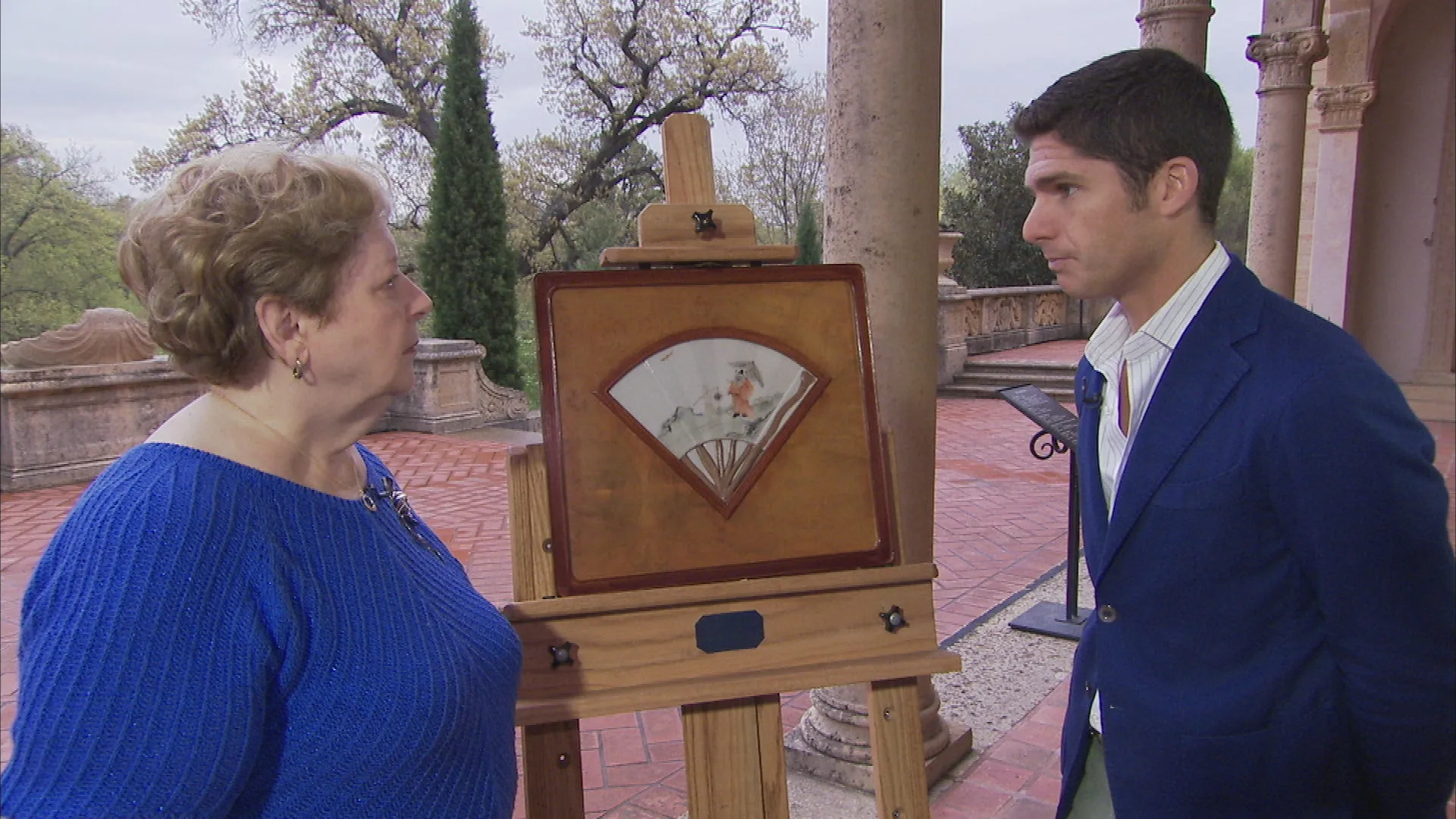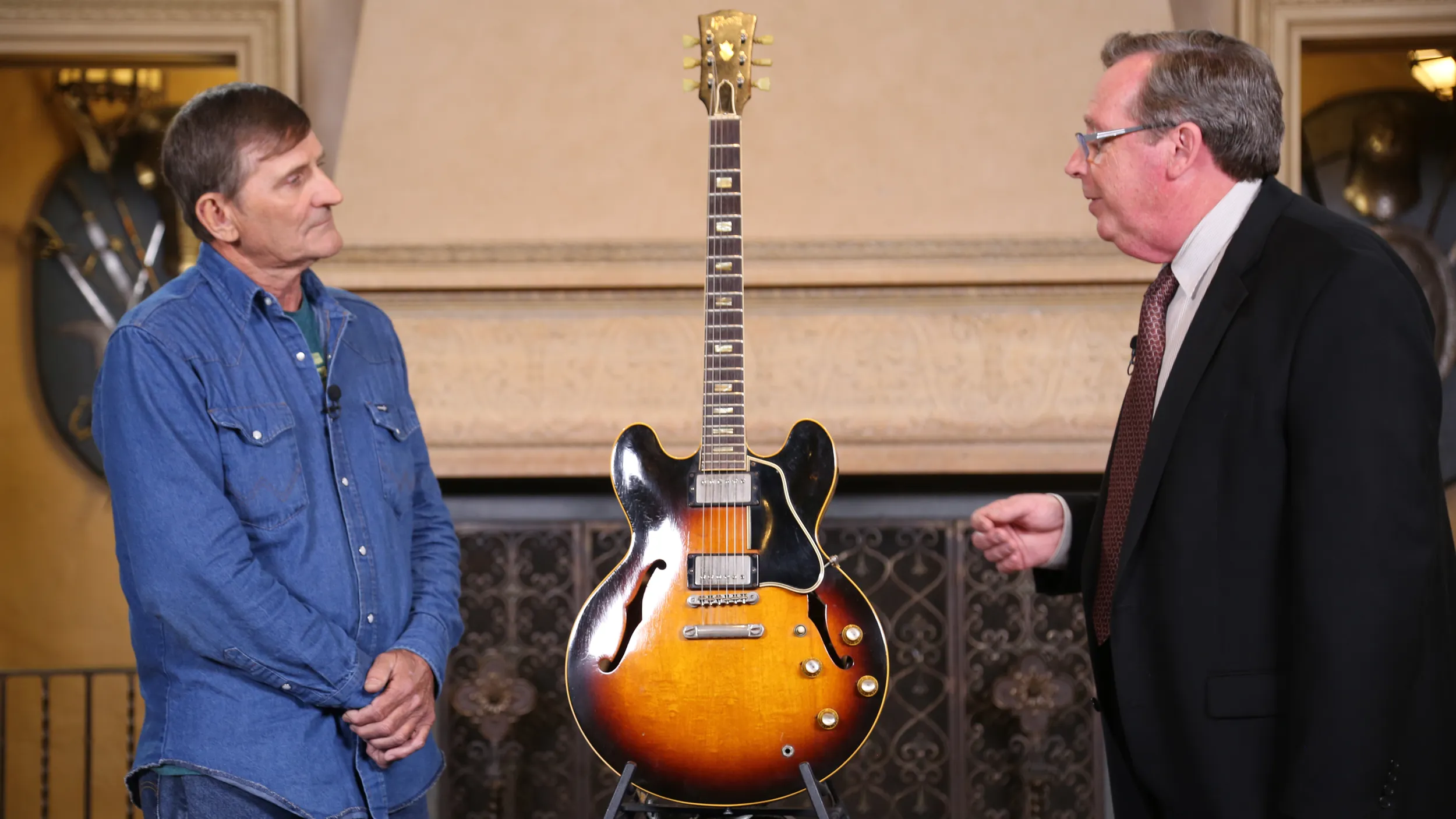GUEST: We took a month long trip to China right after it opened-- that was in the early '80s-- and it was still very... un-modern. But they did have art stores. We went in one, and saw this, and loved it. She said it was around the Qianlong period.
APPRAISER: It is molded in the form of a fan, and it depicts two figures. And this particular chap was associated with a hermit lifestyle that later developed into one of a monk and, in some stories, a gentleman who secured an elixir of long life. He has an attendant here, and he's often associated with a good fortune or a wealth bat. He's, he's one of the earliest of Chinese immortals. So, a famous deity to be depicted on a plaque. Do you happen to know what the bat represents in Chinese mythology?
GUEST: Good luck.
APPRAISER: Good luck. Good luck and good fortune. Now, looking at this plaque, we think it's probably 100 years later than Qianlong. So, we would place the date of this plaque probably in the '20s. Those from the Qianlong period rarely were molded, but, secondly, rarely depicted immortal figures. They were mostly landscape plaques.
GUEST: Oh.
APPRAISER: There are two reasons why this is better than the average 1920s plaque. Firstly, it's not signed. The marketplace is flooded with reproductions of plaques purporting to be by or from the hand of great masters from the republic period.
GUEST: Mm-hmm.
APPRAISER: This is not trying to do that. It's an honest object.
GUEST: Okay.
APPRAISER: Secondly, it's molded, which is quite scarce. The vast majority of porcelain plaques are rectangular, flat surface, and adorned with enamel. What did you happen to pay for it in the '80s?
GUEST: It was around $500, I think.
APPRAISER: Not inexpensive.
GUEST: No.
APPRAISER: The plaque would probably carry a retail value of about $4,000.
GUEST: Oh, very nice! Thank you.












